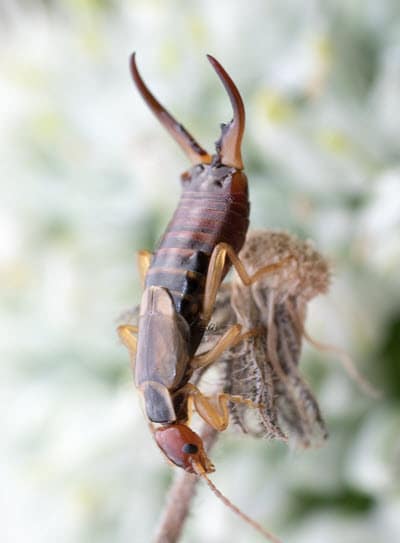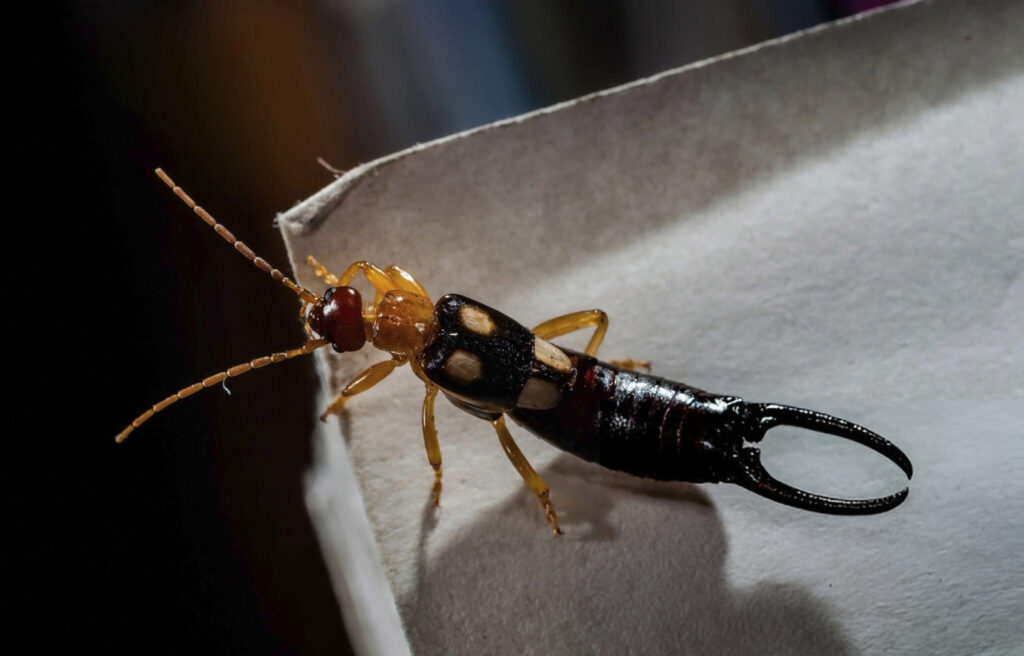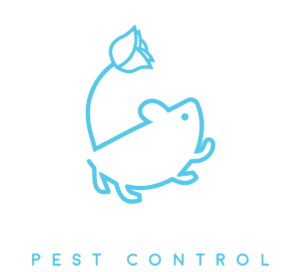Earwigs Control
Earwig Control in Pasadena

Introduction to Earwigs: Uncovering the Mystery Behind the Pinchers
Earwigs are one of the most misunderstood pests homeowners encounter. With their long, slender bodies and intimidating pincers (cerci) protruding from their abdomen, they have earned a reputation for being dangerous or even crawling into people’s ears—a myth that couldn’t be further from the truth. While earwigs don’t actually burrow into your ears, they can certainly invade your home in large numbers, causing headaches for any homeowner.
At Pasadena Pest Control, we’re here to shed light on these elusive pests and offer powerful, lasting solutions to get them out of your home for good.
The Dangers Earwigs Pose in Your Home
Though earwigs don’t carry diseases or pose significant health risks to humans, their presence can be unsettling. Here’s why you don’t want them hanging around:
- Damage to Plants: Earwigs are notorious for feasting on plants, flowers, and vegetables. If you’re a gardener, you may notice holes in your leaves and petals, signs that earwigs are feeding.
- Attracted to Moisture: Earwigs thrive in damp environments, so they often gather in bathrooms, basements, and kitchens, where they can become an unwanted houseguest.
- Unpleasant Odor: When disturbed, earwigs can release a foul-smelling liquid as a defense mechanism, making their presence even more unpleasant.
- Unsightly Infestations: While typically solitary, earwigs can group together in large numbers if the conditions are right, making it feel like you’re facing a swarm.
Earwig Biology and Life Cycle
To effectively deal with earwigs, understanding their biology and behavior is crucial:
- Appearance: Earwigs are dark brown or reddish-brown insects with long, slender bodies, measuring about ½ to 1 inch in length. Their distinctive pincers are used for defense and catching prey.
- Habits: Earwigs are nocturnal and hide in dark, moist places during the day, such as under rocks, mulch, and leaf piles. They’re also great climbers and can be higher up.
- Life Cycle: Female earwigs lay 20–80 eggs in underground burrows. Once hatched, nymphs look similar to adults but lack fully developed wings and pincers. As they molt, they grow larger and more developed.
- Lifespan: Earwigs typically live for about one year, but during that time, they can multiply rapidly under the right conditions, leading to infestations.
Why Your Home Attracts Earwigs
Earwigs are drawn to your home by certain favorable conditions. Knowing these can help you take preventive measures:
- Moisture: Earwigs love damp, humid environments. Leaky pipes, standing water, and overly moist soil around the foundation of your home can attract them.
- Mulch and Organic Matter: Dense layers of mulch, compost, wood chips and shavings, and leaf piles provide the ideal shelter for earwigs to hide and reproduce.
- Outdoor Lighting: Earwigs are attracted to bright lights, so porch or garden lights can bring them closer to your home.
- Cracks and Gaps: Small openings in doors, windows, and foundations are easy entry points for earwigs.
- Overgrown Vegetation: Thick plants and shrubs near your home offer hiding spots and keep moisture close to your walls.
- Rotting Wood: Old, damp wood is a favorite hiding spot for earwigs during the day.
- Rain: Despite being attracted to moist climes, too much moisture often drives them inside, so they tend to be a greater problem during the wetter seasons.

5 Fascinating Facts About Earwigs
- Nighttime Foragers: Earwigs are nocturnal and emerge under the cover of darkness to feed on plants, decaying matter, and even smaller insects.
- Surprising Flyers: Though not common, some species of earwigs have wings tucked under short, leathery covers and can fly short distances.
- Maternal Care: Female earwigs are attentive mothers, guarding their eggs and nymphs from predators—a rare trait in the insect world.
- Carnivorous Tendencies: While mostly herbivorous, earwigs will also hunt small insects, making them both pests and natural pest controllers.
- Cold-Weather Survivors: Earwigs hibernate during the winter in underground burrows, emerging once temperatures rise.
Effective Tips to Control Earwigs
Want to keep earwigs out of your home? Follow these simple steps for better earwig control:
- Reduce Moisture: Fix any leaky pipes or faucets, and make sure to dry out damp areas like basements, crawl spaces, and bathrooms.
- Clear Mulch and Debris: Keep mulch away from your home’s foundation, and remove piles of leaves, grass clippings, and decaying wood.
- Trim Vegetation: Prune back plants and bushes near your home, allowing better air circulation and reducing earwig hiding spots.
- DIY Traps:
- Soy Trap
- Mix 1 cup cooking oil and ¼ cup soy sauce in a container and place near your problem areas in the evening. You should find an abundance of earwigs within the next morning. Discard and reset as needed.
- Newspaper Trap
- Set up rolled-up damp newspapers near areas where earwigs congregate; in the morning, discard the papers filled with trapped earwigs.
- Soy Trap
- Outdoor Lighting: Reduce the use of bright outdoor lights, or switch to yellow-hued bulbs that are less attractive to earwigs.
- Check Firewood: Store firewood at least 20 feet from your house and off the ground to prevent earwig infestations.
- Dehumidify: Use a dehumidifier in moist areas like basements or laundry rooms to make your home less appealing to earwigs.
- Inspect Houseplants: Earwigs can hide in potted plants. Make sure the soil isn’t overly wet, and check plants before bringing them inside.
- Seal Entry Points: Use caulk to fill cracks around windows, doors, and the foundation to prevent earwigs from getting inside.
Why Professional Earwig Control Is the Ultimate Solution
While these prevention tips can help reduce earwig problems, full elimination often requires professional intervention. Here’s why Pasadena Pest Control is your best bet for effective earwig control:
- Thorough Inspections: We identify all the areas earwigs hide in and around your home, targeting both indoor and outdoor locations.
- Detailed Treatments: We develop customized pest control plans that address the specific conditions attracting earwigs to your property and take the time and effort to find and treat their harborage areas.
- Long-Lasting Solutions: We don’t just treat the symptoms. We target the root causes of infestations to prevent them from returning.
- Expert Knowledge: Our licensed pest control specialists are trained to handle even the most stubborn infestations using the latest industry techniques.
Safety First
“Is it Safe?”
At Pasadena Pest Control, we keep the safety of your family and pets at the forefront of our minds as we plan and work, doing so with minimal disruption to your daily life. We apply chemicals according to the label, which in California is among the strictest and safest in the nation. We take into account your pets and plants, your family and the features specific to your property. At Pasadena Pest Control, we are well-trained on safety procedures, eco-consciousness and educating our customers. And yes, we are licensed, bonded and insured.
When you work with us, you will always know what to expect, how to be prepared, when we are coming, when we’ve started and when we’re done. In short, we provide The Service We’d Want in Your Shoes.
Contact Pasadena Pest Control Today!
Don’t let earwigs take over your home. With our expert pest control services, we can rid your property of earwigs and help you regain control of your space. Contact Pasadena Pest Control today for a free consultation and let us handle these pesky invaders for good!
Home Protection Plan
This pest is considered a “General Pest” and is covered under our General Pest Home Protection Plan. For more information on our Home Protection Plan, see here.
Call Pasadena Pest Control—Because Chasing Roaches at 2 A.M. is So Last Season
Let’s face it, chasing down oriental roaches in your basement at midnight is not how you want to spend your time. Call Pasadena Pest Control, and we’ll handle these pests faster than you can say, “Why does my house smell like old gym socks?” Time to get serious about your roach problem—give us a shout today!
Questions Others are asking
We ❤️ love helping new customers! Don’t see your question answered below? Call us and we’ll
be happy to provide more information.
be happy to provide more information.
Earwigs are identifiable by their forceps-like pinchers but do not bite or carry diseases.
They are more of a nuisance than a serious threat and do not harm humans.
Maintain a dry environment and reduce organic debris where earwigs might hide.
